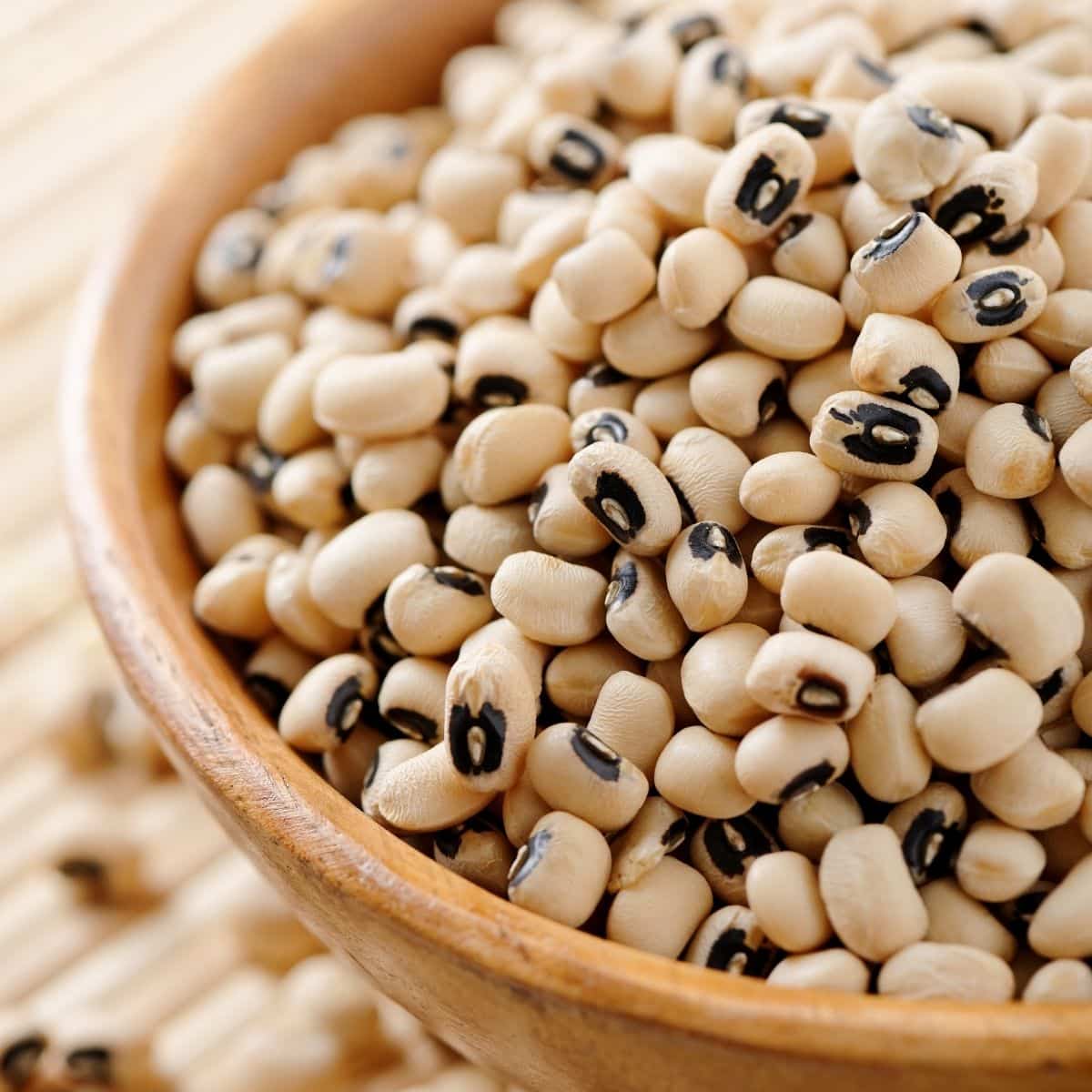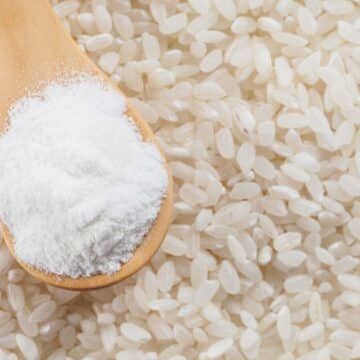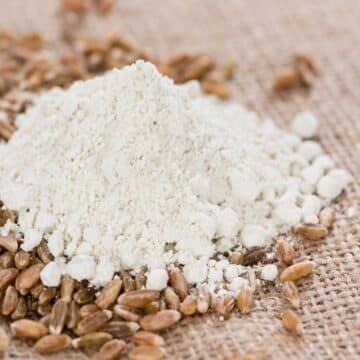The best black-eyed peas substitutes are a great variety of beans to choose from for making your recipes turn out equally wonderful! There's a good chance you have one or more of these on hand, in your pantry too!

Jump to:
The 7 Best Black-Eyed Peas Substitutes To Use In Your Recipes
Black-eyed peas are certainly a unique ingredient. They have a bit of a nutty flavor and a firm, almost meaty texture that makes them perfect for adding to all sorts of dishes. Unfortunately, they can be difficult to find in some parts of the world.
If you can't find black-eyed peas where you live, don't worry! There are plenty of substitutes that will work just as well in your recipes. Read on for the 7 best black-eyed peas substitutes to use in your recipes.
What Are Black-Eyed Peas?
Black-eyed peas are a type of legume popular in many parts of the world, especially in the southern United States. They get their name from their distinctive black spots, which are actually the seeds of the plant.
Black-eyed peas are often used in soups, stews, and rice dishes. They can also be eaten on their own as a side dish. Some of the most popular black-eyed pea recipes include Hoppin' John, a dish made with rice and black-eyed peas, and collard greens with black-eyed peas.
The Best Black-Eyed Peas Substitutes
Black-eyed peas are relatively easy to find in stores, but if you can't find them or you're looking for a different flavor, there are plenty of substitutes that will work just as well in your recipes.
Here are the 7 best black-eyed peas substitutes:
1. Purple Hull Peas
Purple hull peas are a type of legume that is closely related to black-eyed peas. They have a similar flavor and texture and can be used as a substitute in most recipes.
Purple hull peas are easy to find in stores, and they are usually less expensive than black-eyed peas. They can also be grown at home, making them a great option for people who want to save money or who have trouble finding black-eyed peas in their area.
Purple hull peas can be cooked in the same way as black-eyed peas, and they are a great addition to soups, stews, and rice dishes. They can also be eaten on their own as a side dish. Some dishes that go well with purple hull peas include cornbread, collard greens, and ham.
2. Pinto Beans
Pinto beans are a type of common bean that is popular in Latin American cuisine, especially in dishes like frijoles refritos, and are also used in Tex-Mex cuisine.
Pinto beans get their name from their distinctive pinto markings, which are actually the seeds of the plant. They have a similar nutritional profile to black-eyed peas and are also a good source of protein, fiber, and iron.
Pinto beans are often used in burritos, enchiladas, and other Mexican dishes. They can also be eaten on their own as a side dish. Some of the most popular pinto bean recipes include black bean burritos and refried beans.
3. Crowder Peas
Crowder peas are a black-eyed peas substitute that can be found in most grocery stores. Crowder peas are smaller than black-eyed peas and have a slightly sweeter flavor. They are perfect for dishes like Hoppin' John or Brunswick Stew.
If you're looking for a substitute that has a similar texture to black-eyed peas, crowder peas are your best option. They can be boiled or slow-cooked, and they also work well in recipes that call for canned black-eyed peas.
In terms of the recipes themselves, there are very few differences between black-eyed peas and crowder peas. The main difference is in the size and sweetness of the peas, but they can be used interchangeably in most recipes.
4. Fresh Romano Beans
An Italian variety of the common bean, Romano beans are also known as Italian string beans or fasolia. They are a staple in Italian cuisine and can be used as a substitute for black-eyed peas in many recipes.
Romano beans have a similar texture to black-eyed peas, but they are a bit firmer. They also have a slightly nutty flavor that pairs well with other Italian flavors like garlic, tomatoes, and basil.
Romano beans can be used in recipes like pasta fagioli or minestrone soup. Their unique flavor also makes them a good addition to salads and stir-fries. However, in terms of availability, Romano beans can be difficult to find in normal grocery stores.
5. Fresh Lima Beans
Lima beans, also known as butter beans, are a type of bean that is large and flat. They are white or light green in color and have a delicate flavor.
Lima beans are a good substitute for black-eyed peas in recipes, as they have a similar texture and flavor. Lima beans can be cooked in a variety of ways, including boiling, steaming, and roasting. They are also a good source of protein and fiber.
The sweet and nutty flavor of lima beans pairs well with other ingredients, making them a versatile ingredient. They can be used in soups, stews, salads, and side dishes. Just make sure you don't overcook them, as they can become mushy.
6. White Acre Peas
White acre peas are a black-eyed peas substitute that are often used in the south. They have a similar taste and texture to black-eyed peas, but they are a little bit smaller. White acre peas are also a little bit sweeter than black-eyed peas, so they're a good substitute if you're looking for a slightly different flavor.
The abundance of protein and fiber in these peas is what makes them so beneficial to our health. Just like black-eyed peas, white-acre peas are a good source of both soluble and insoluble fiber. This combination can help to regulate digestion and lower cholesterol levels.
You can use white acre peas in almost every recipe that calls for black-eyed peas, although some signature dishes like Hoppin' John may not taste quite the same.
7. Kentucky Wonder Beans
Leaning towards the more unknown territory, Kentucky wonder beans are a variety of common bean. They got their name because they were once grown in Kentucky, but they can now be found all over the world.
Kentucky wonder beans have a similar nutrition profile to black-eyed peas. They are an excellent source of fiber, protein, and vitamins and minerals like iron, potassium, and magnesium.
They have a creamy texture and a nutty flavor that makes them a good substitute for black-eyed peas in recipes. Use Kentucky wonder beans in soups, stews, or chili. You can also mash them and use them as a side dish or in a dip.
Bottom Line
Black-eyed peas make for a delicious and nutritious addition to any meal. However, they may not always be available. If you find yourself in need of a black-eyed pea substitute, any of the above options will work well in your recipes.
Whichever substitute you choose, just make sure to cook the beans properly. Overcooking them can make them mushy, and nobody wants that.





Comments
No Comments